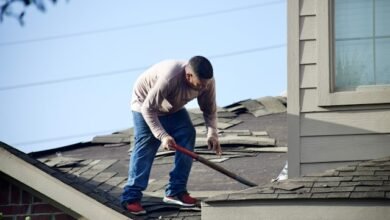Green Plumbing Upgrades That Reduce Water Waste and Cut Utility Costs

Why Eco-Friendly Plumbing Matters in Today’s Homes
With growing climate concerns and population pressures, eco-friendly plumbing practices have become essential for households. According to the EPA’s WaterSense program, minor leaks can waste nearly 10,000 gallons of water annually, leading to higher utility bills and a strain on local water supplies. Homeowners are increasingly seeking advice from a plumber Rock Hill SC, to implement green upgrades, which enhance comfort and functionality and reduce environmental impact. Modern, water-saving plumbing solutions can improve air quality and minimize mold risks. These homeowners set a positive example for their communities and future generations by prioritizing water conservation.
Popular Green Plumbing Features Worth Considering
Green plumbing offers an expanding menu of options—some simple swaps, while others require more investment or planning. These innovative products and solutions balance sustainability and everyday convenience, making them attractive upgrades for new builds and existing homes.
- Low-flow toilets and showerheads: Replacing older toilets or showers with WaterSense-labeled models can reduce water use by up to 60%. Many states now require these efficient fixtures in new construction. For instance, switching to a low-flow toilet can save an average household 13,000 gallons of water annually.
- Faucet aerators: These inexpensive devices introduce air into the water stream, reducing the overall flow without sacrificing water pressure. Bathrooms and kitchens equipped with aerators can save up to 700 gallons of water annually per faucet, especially in busy households.
- Greywater systems: Recycling water from washing machines, sinks, and bathtubs to irrigate landscaping or flush toilets significantly decreases the demand for fresh water. Once considered advanced, these systems are now accessible to more homeowners thanks to improved technology and clear installation guidelines.
- Tankless water heaters: On-demand water heaters only use energy when you turn on the tap rather than constantly heating a tankful of water. They reduce water and energy usage, and the units are often smaller, freeing up valuable space in mechanical rooms or closets.
Step-by-Step Guide to Reducing Water Waste With Plumbing Upgrades
- Begin with faucets and showerheads: Swap out old fixtures for WaterSense-certified models to immediately reduce water flow. Many DIYers find these upgrades easy and affordable, requiring basic tools and minimal time.
- Audit your toilets: High-efficiency or dual-flush toilets have two settings for different waste levels, making it simple to use only as much water as necessary. Use food coloring in the tank to check for silent leaks that may cost you money daily.
- Install smart leak detectors: Electronic leak detectors placed beneath sinks, behind appliances, or near the water heater now feature wireless alerts and even automatic shut-off functionality. Early detection is crucial for minimizing waste and preventing costly water damage.
- Harvest or reuse greywater: Many regions encourage or subsidize rainwater collection tanks and greywater systems. These solutions reduce potable water demand for outdoor irrigation, and with some planning, installation can be straightforward and cost-effective.
- Upgrade to an efficient water heater: Modern tankless or hybrid water heaters heat water much more efficiently than older tank models. Selecting the right size and configuration for your home ensures comfort and savings for years.
How Green Plumbing Improvements Can Cut Utility Bills
Investing in water-efficient plumbing helps families save on utility costs while benefiting the environment. Low-flow devices can save thousands of gallons annually, reducing the energy needed for pumping, heating, and treating water. Households can save approximately $380 annually by installing water-efficient toilets, faucets, and showerheads. Over time, these savings often offset the initial investment within two to five years. Homeowners also experience lower energy costs and potentially improved home insurance rates due to reduced risks of water damage. Additionally, saving water supports the community by lessening the demand on municipal water systems and wastewater facilities.
Smart Technology That Takes Conservation to the Next Level
Plumbing has embraced technology, leading to smarter ways to monitor and manage water usage. Smart leak detection systems can identify leaks and send alerts to homeowners, allowing quick action to prevent water loss and potential damage. Key devices include WiFi-enabled leak sensors, digital water shut-off valves, and automated irrigation controllers that adjust based on weather conditions to enhance water efficiency. These innovations help homeowners track water usage and develop better water-saving habits.
Proactive Maintenance Tips for an Efficient Home
To maintain efficient and sustainable plumbing, homeowners should regularly inspect for leaks or corrosion, particularly under sinks and around water heaters. Flushing the water heater annually helps prevent sediment buildup. Seasonal tasks include insulating pipes in winter and checking hoses in spring. Upgrading worn gaskets or seals can save significant water. Partnering with a licensed plumbing contractor for regular inspections ensures issues are caught early and systems run efficiently. Keeping a maintenance log and scheduling regular inspections can assist in long-term planning and may appeal to environmentally conscious buyers when selling the home.
Staying Informed as Plumbing Standards Evolve
Following reputable sources like the EPA’s WaterSense can help homeowners stay informed about technological advancements and water conservation policies. Researching local building codes, utility rebates, and new products can also help them make smart investments in plumbing solutions. Improving plumbing systems enhances property value, conserves resources, and reduces costs. Embracing green plumbing contributes to a sustainable future, with small, incremental changes leading to significant long-term results in reducing water waste.




